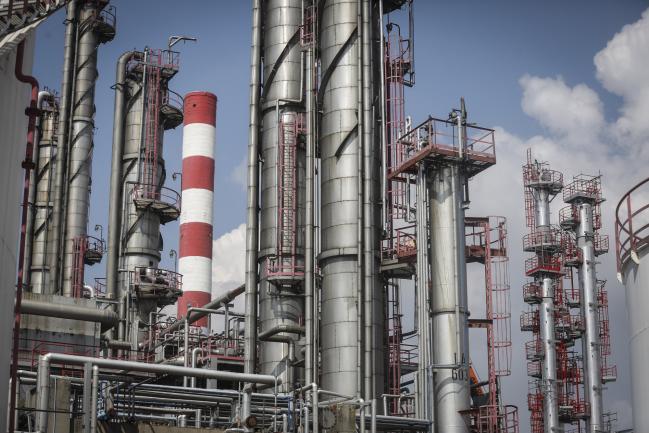(Bloomberg) -- With the noose of U.S. sanctions already tightening on Iran’s oil exports, buyers and traders of crude are asking who can make up for the expected shortfall in supply. Most Iranian oil is heavier, or more viscous, than international benchmark crudes. It’s also high in sulfur, an impurity.
That leaves three countries -- Saudi Arabia, Iraq and Russia -- in the strongest position to fill the gap and profit from Iran’s misfortune. Even the U.S., which produces a different type of oil, could be a potential source of additional supplies.
1. Isn’t all crude the same?
Oil producers in the Middle East pump about a quarter of the world’s crude, and most grades that are both heavy and high in sulfur come from fields in the region. Refiners, due to environmental controls, must remove sulfur to turn crude into products such as gasoline and diesel. High-sulfur grades are referred to as sour.
Lighter crudes, such as U.S. West Texas Intermediate, are generally more valuable for refiners because they readily yield more high-value light products including gasoline. Heavy crudes like Iran’s are better for making diesel, jet fuel and other middle distillates.
“Refiners can adjust their mix of crude intake to a degree, but they can’t meet middle distillate demand just running U.S. light crude,” said Robin Mills, chief executive officer of Dubai-based consultant Qamar Energy. While Iran’s buyers can still take U.S. oil, they would need some heavier crude to blend with it, as well as time to adjust their refineries.
Iran also sells an extremely light oil called condensate pumped from its South Pars gas fields. Condensate is often produced together with natural gas, and the Islamic Republic holds the world’s second-biggest gas reserves, according to BP (LON:BP) Plc data.
2. How much oil is at risk?
OPEC’s third-largest producer was pumping close to 4 million barrels a day earlier this year, with about 2.5 million of that going to exports. This changed after U.S. President Donald Trump said in May that he was pulling the U.S. out of the Iran nuclear accord and planned to reinstate sanctions on the country’s energy industry. An earlier round of sanctions under former President Barack Obama slashed Iran’s oil exports by about half, to roughly 1 million barrels a day, from 2012 through 2015. Trump’s stated aim is to cut Iranian sales to zero, and while the curbs won’t take effect until Nov. 4, they’re already scaring away buyers.
Iran’s exports slumped to 1.7 million barrels a day in September, according to Bloomberg tanker tracking data. Even if Trump falls short of his goal and Iran is able to continue selling about 1 million barrels a day, as it did during Obama’s presidency, the country’s partial exit from global oil markets would still leave a big hole in supply.
3. Where does Iran sell most of its crude?
Iran ships mostly to buyers in Asia, with Europe running a close second. In 2015, during the earlier round of international sanctions, the European Union put an embargo on Iranian oil and halted purchases completely. Iran currently ships to several countries in Europe, though its sales to France and the Netherlands dried up in September, according to Bloomberg tanker-tracking data.
Six buyers -- China, India, Japan, South Korea, Taiwan and Turkey -- received waivers during the earlier sanctions and were able to keep importing Iranian oil. Under Trump the U.S. hasn’t issued any waivers, nor has it said how, or if, it might do so.
Iran’s top customer China is the biggest question mark this time around. China continues to import Iranian crude, though India, another major buyer, plans to stop buying in November. South Korea and Taiwan have already halted imports from Iran.
4. What are producers doing to make up for the shortfall?
Saudi Arabia and Russia have said they’ll boost output to offset shortages in the market. Both can produce heavy, sour crude.
Saudi Arabia, the world’s largest exporter and Iran’s regional rival, currently pumps about 10.4 million barrels a day. The kingdom says it has a production capacity of 12.5 million barrels a day, though it has never pumped more than 11 million. Russia could add about 300,000 barrels a day, Energy Minister Alexander Novak said in a September interview in Vladivostok.
Iraq has added 230,000 barrels a day of production this year to reach a record 4.66 million in September. The second-biggest producer in the Organization of Petroleum Exporting Countries is boosting production at southern fields including the giant Rumaila deposit, and the increased flow could help offset missing shipments from its neighbor Iran.
Production in the U.S. is on track to rise by about 1 million barrels a day on average this year and again in 2019, according to forecasts by the Energy Information Administration.
